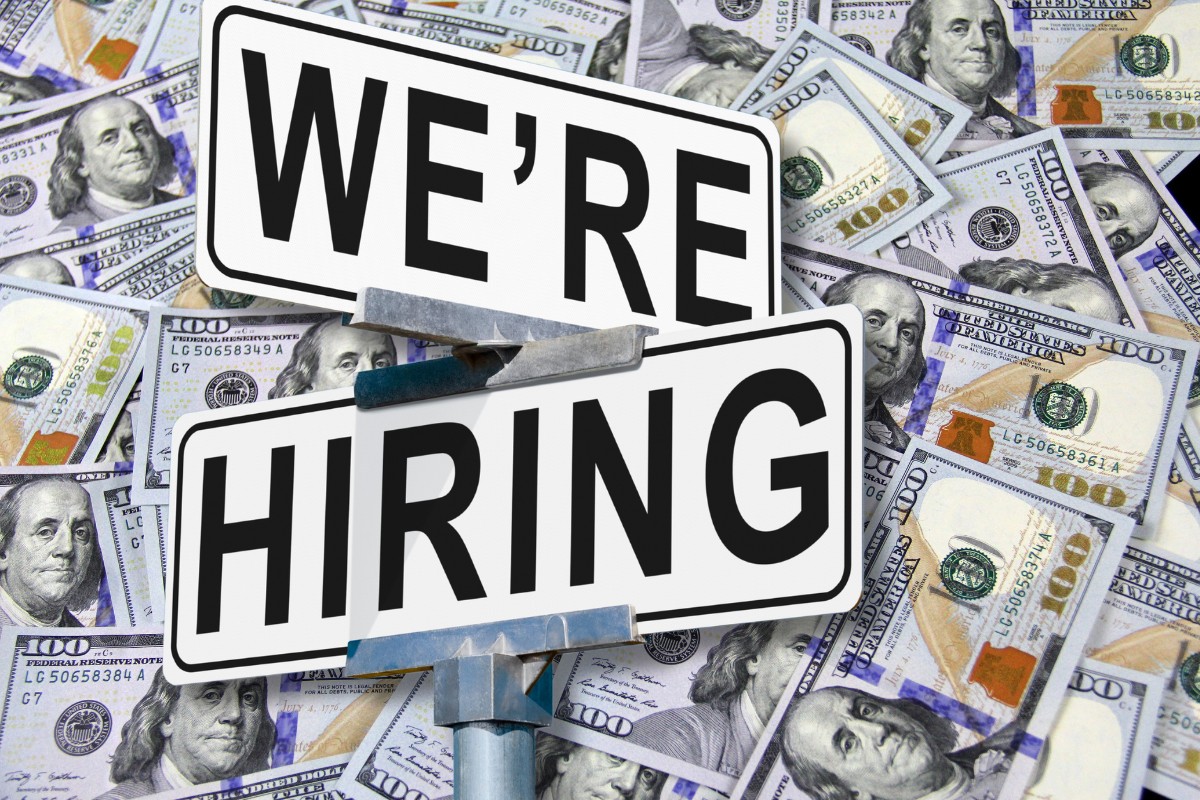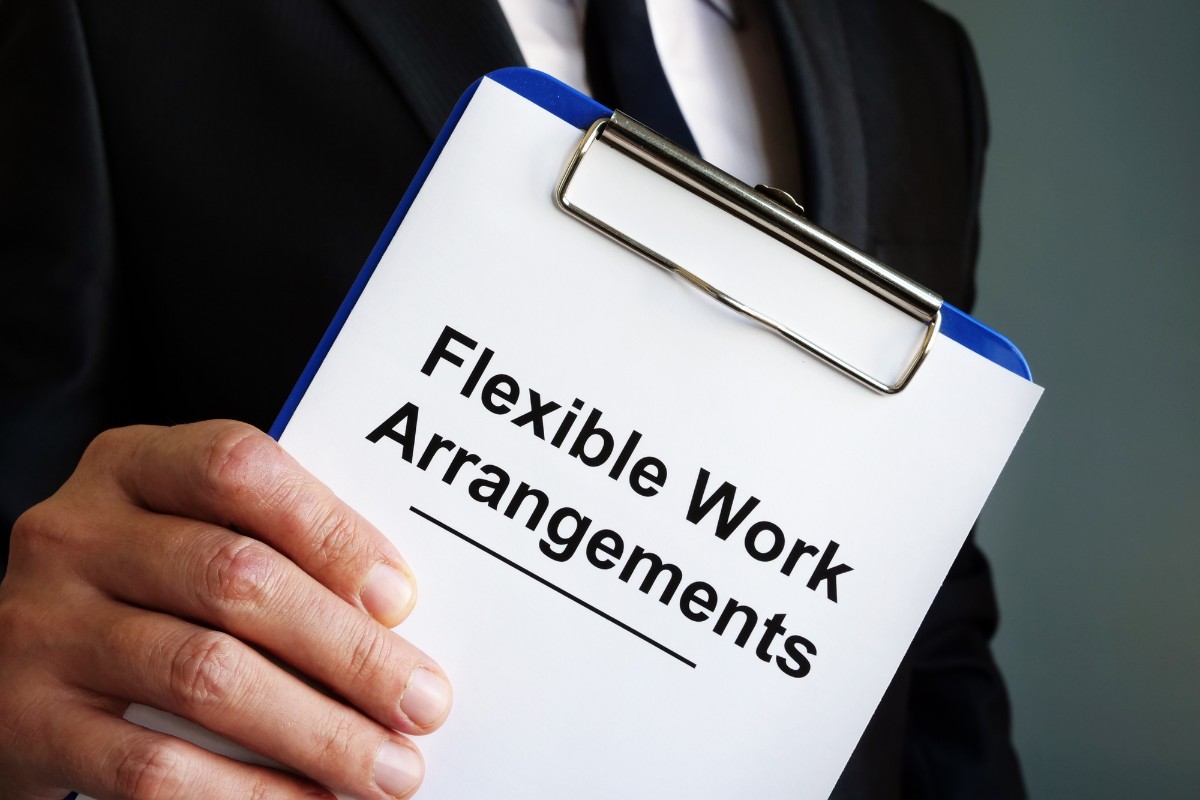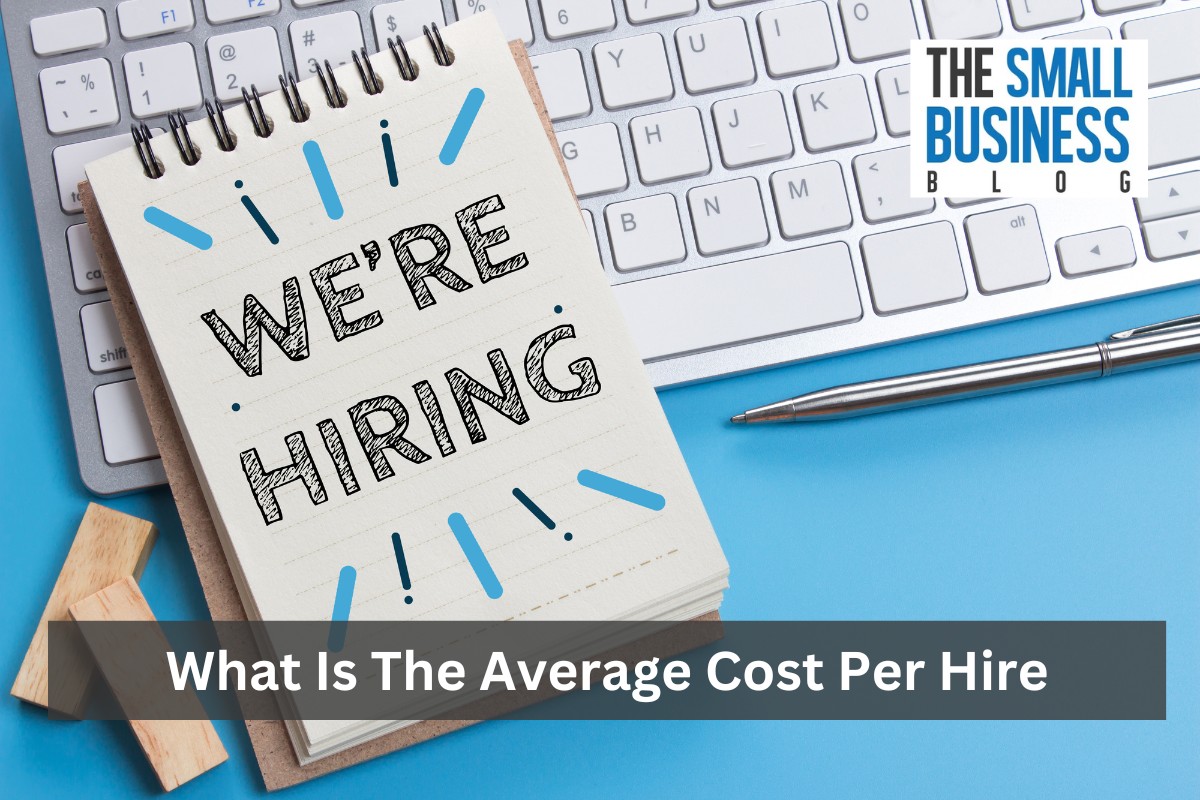There are several reasons why a business may advertise a job vacancy.
Perhaps the most obvious is when an employee has left, for whatever reason.
It could be retirement, misconduct, or simply exploring different opportunities.
An employment position can also be created when the company expands and needs additional staff.
Generally, looking for a new employee is a good thing and an exciting opportunity for those involved.
However, it can be expensive to hire a new employee, there are many different costs involved.
Before you start the hiring process it’s important that you understand what is the average cost per hire, what your hiring costs are, and whether you’re above or below average.
Post Contents
- 1 Key Statistics
- 2 What Is The Average Cost Per Hire in 2024?
- 2.1 1. In The US The Average Cost Per Hire IS $4,700
- 2.2 2. On Average It Will Take 36-42 Days To Fill One Position
- 2.3 3. It Can Cost As Much As 40% Of A Base Salary To Complete the Hiring Process
- 2.4 4. According To 63% Of Hirers, AI Is A Positive Influence
- 2.5 5. The Average New Employee Takes 3-8 Months To Be Fully Productive
- 2.6 6. Executives Cost Roughly 3 Times More To Hire Than Non-Executives
- 2.7 7. 67% Of Recruiters Are Frustrated As There Is A Lack Of Qualified Candidates
- 2.8 8. Job Posts With The Word Flexibility In Increased By 78% Between 2016-2019
- 2.9 9. 47% Of Recruiters Use Social Media To Find Employment Candidates
- 2.10 10. 53% Of Recruiters believe Transparency Is Essential
- 3 What’s Included In The Cost Of Hiring
- 4 Summing Up
- 5 Sources
Key Statistics
- In the US the average cost per hire is $4,700
- On average it will take 36-42 days to fill one position
- It can cost as much as 40% of a base salary to complete the hiring process
- According to 63% of hirers, AI is a positive influence
- The average new employee takes 3-8 months to be fully productive
- Executives cost roughly 3 times more to hire than non-executives
- 67% of recruiters are frustrated as there is a lack of qualified candidates
- Job posts with the word flexibility in increased by 78% between 2016-2019
- 47% of recruiters use social media to find employment candidates
- 53% of recruiters believe transparency is essential
What Is The Average Cost Per Hire in 2024?

1. In The US The Average Cost Per Hire IS $4,700
Hiring a new employee involves significantly more than just placing an advert.
In the first instance a job description must be prepared.
This has to be carefully worded to attract the right candidates without getting the company into hot water.
The advert needs to be placed and monitored, applications need to be screened, interviews scheduled, and, after selection, training provided.
The total of these costs on average is $4,700.
Of course, depending on the role it can be considerably more or less.
The higher the skill level required the more expensive the cost per hire is likely to be.
It should be noted that high-paying jobs do skew the average cost.
Research shows that 75% of hires cost less than $4,700.
Adjusting figures suggests a hire should cost you approximately $1,633.
(Zippia)
2. On Average It Will Take 36-42 Days To Fill One Position
The exact amount of time it takes to hire a new employee will vary according to the position and whether you’re in the public or private sector.
Thanks to paperwork and due diligence it can take longer to fill a position in the public sector.
The average is closer to 60 days.
At the other end of the scale, franchise employees are usually hired within just 10 days.
Naturally, the hiring time is also different depending on where you are in the States.
Washington has an average hire time of 34.4 days while Miami can do it in just 18.6 days.
(Zippia)
3. It Can Cost As Much As 40% Of A Base Salary To Complete the Hiring Process
As mentioned, the cost of hiring is made up of a variety of costs.
These include internal or external hiring professionals and these can add a significant total to the overall cost.
The cost of advertising is minimal but training and loss of production costs can also add up.
The latest Zippia research shows that costs can be as high as 40%, especially when looking for an executive employee.
That means, if you’re offering a salary package of $40,000, it will cost you as much as $16,000 to complete the hiring and training process!
(Zippia)
4. According To 63% Of Hirers, AI Is A Positive Influence
Artificial Intelligence has risen to prominence quickly in the last few years.
A variety of industries are adopting it and some are fighting it, such as the Hollywood writers and actors strike.
For recruiters, AI is proving to be a game-changer.
It’s being used to help produce the required profile.
It can also check profiles and help with the matching and screening process.
The latest Zippia survey shows that recruiters are increasingly relying on AI and that 63% of them feel it is beneficial and will continue to use it.
(Zippia)
5. The Average New Employee Takes 3-8 Months To Be Fully Productive

The cost of hiring doesn’t stop when someone is made a recruitment offer.
That simply gets them onboard.
Even a fully qualified and highly skilled new employee will need some training.
This type of employee is likely to be at the lower end of the time scale, being fully productive in a few months.
Lower-skilled workers can take up to 8 months to fully grasp the role and become fully productive.
This is because new employees need to learn the systems within the business and adapt to how the business works, including the morale of the team.
That takes time.
If an employee is not fully productive they are still costing the company money in funds not being earned.
(Zippia)
6. Executives Cost Roughly 3 Times More To Hire Than Non-Executives
It’s not surprising that it costs more to hire an executive than a non-executive.
In the first instance there is a bigger financial package, directly costing the company money.
There is also a longer period to find the right employee and verify their skill set, along with checking references.
In fact, the average cost of hiring an executive is a staggering $14,936.
Even a highly skilled executive can’t be fully productive immediately, they also need to understand the company, its structure, and what they can and can’t do.
Considering the cost of hiring an executive it’s important to take a little longer and get it right.
(Zippia)
7. 67% Of Recruiters Are Frustrated As There Is A Lack Of Qualified Candidates
Low unemployment rates and improved worker conditions are reducing the inclination for employed workers to look for alternatives.
That means the best workers are employed and businesses looking for help are left with low-skilled workers.
These are often not suitable for the job at hand, making the recruitment process frustrating.
In fact, 67% of recruiters agree with this and are frustrated by the lack of quality candidates.
It’s likely that this will become a bigger issue in the coming years, especially as companies adapt and offer attractive packages.
It should be noted that the best packages will revolve around benefits more than the financial reward.
(Entelo’s Recruiting Survey 2018)
8. Job Posts With The Word Flexibility In Increased By 78% Between 2016-2019

Millennials are starting to flood the workforce, a surprising number of them have started working in the last 2-3 years and this figure will grow rapidly.
By 2025 it’s estimated that Millennials will be 75% of the workforce!
As Millennials have different values from previous generations, job posts will need to be altered accordingly.
The LinkedIn global recruiting survey shows that, between 2016-2019, there was a 78% increase in the use of the word ‘flexibility’.
A similar increase was shown in the use of ‘diversity’.
Millennials are focused on maintaining a good work-life balance, meaning that employers don’t just need to mention the words, they need to create and implement policies to back it up.
The number of Millennials in the workforce, low unemployment rates, and the range of skills means that Millennials have the power in the employment market.
This is reflected by the fact 43% of newly hired employees quit as it wasn’t what they thought it was.
In short, Millennials have plenty of opportunities available to them, making it more challenging for recruiters to find and keep the best ones.
(Deloitte/LinkedIn)
9. 47% Of Recruiters Use Social Media To Find Employment Candidates
The world has evolved.
Today, three-quarters of the global population are connected to the internet.
In fact, nearly half the population is on Facebook.
That means employers need to go online to find employees.
47% of recruiters are already aware of this and use social media to find suitable employees.
This number is likely to grow in the next few years, potentially replacing conventional job sourcing.
Of course, while social media can help locate and even confirm details of prospective employees, they still need to be interviewed and the appropriate costs will still apply.
(Jobvite National Study)
10. 53% Of Recruiters believe Transparency Is Essential
Millennials are now the largest proportion of the workforce and their key values are different to previous generations.
One of the critical employment considerations for Millennials is work-life balance and the importance of good working conditions.
Over half of recruiters feel that the recruitment process, including advertisements and rewards, will need to be much more transparent if companies wish to attract the best talent.
Of course, this doesn’t just apply to recruitment, businesses will need to work on transparency throughout the organization to ensure the employment experience is what Millennials expect.
If not, employees are likely to go elsewhere.
That means a considerable investment in the cost of hiring more new employees.
(LinkedIn)
What’s Included In The Cost Of Hiring

Hiring may seem as simple as placing an advert and interviewing appropriate candidates.
However, that’s simply not the case, there are a variety of costs involved, which is why the average cost per hire is over $4,000.
Hiring Manager or External Recruiter
If you have a specialist HR team then they are likely to handle the hiring process.
It’s estimated that in 48% of non-executive hires the HR department handles everything.
Of course, that means you’re paying staff to work for you all year round, just to ensure their skills are available when you need to hire.
Some businesses prefer to hire via an external recruiter.
If you have minimal staff hires a year then this could be the cheaper option.
But, it’s not free.
External recruiters generally charge a percentage of the wage being offered.
That means their rate could be anything from $2,000 up.
Advertisement Cost
HR time will be used to post vacancies on social media and monitor them.
However, it is still a good idea to post in the traditional manner.
That’s using industry magazines and other publishing materials.
There’s a cost associated with this.
Alongside this, you may wish to use the services of a headhunter or similar.
They can help you locate the highest quality candidates, but they will cost you.
Screening Candidates
Screening candidates is an essential part of the process.
You need to confirm they are who they say they are and that they have the relevant qualifications.
Interestingly, some companies don’t bother with screening.
However, it is part of the process 74% of the time for executive positions and 69% of the time for non-management positions.
The main cost associated with screening is time.
That’s the time it takes to research a candidate online and to create a letter to relevant references.
Training Cost
As mentioned, a new employee is usually 25% productive on their first day and can take up to 8 months to be fully productive.
During that time they will need training.
The majority of this will be internal which involves another member of staff training them.
That means two employees are less than fully productive, effectively costing you money.
Additionally, external training adds more costs to the hiring process.
Summing Up
When looking at what is the average cost per hire, the answer is $4,700.
The good news is this is inflated by the top-end executive jobs.
For most roles the cost will be closer to $2,000.
This is still a sizable investment and one you should remind yourself of before committing to a specific person.
It will help you make the right decision and minimize repeat hire costs.






























